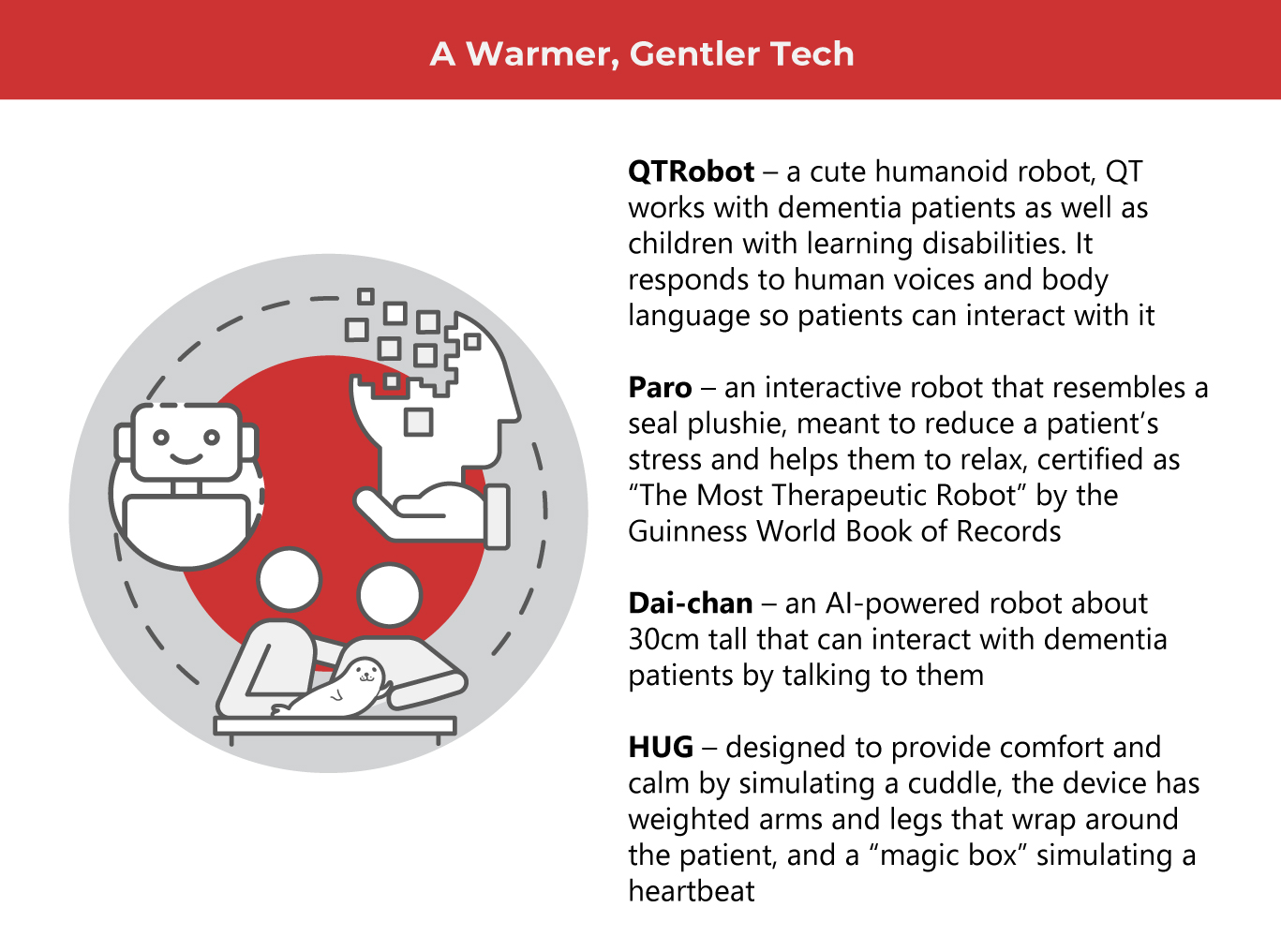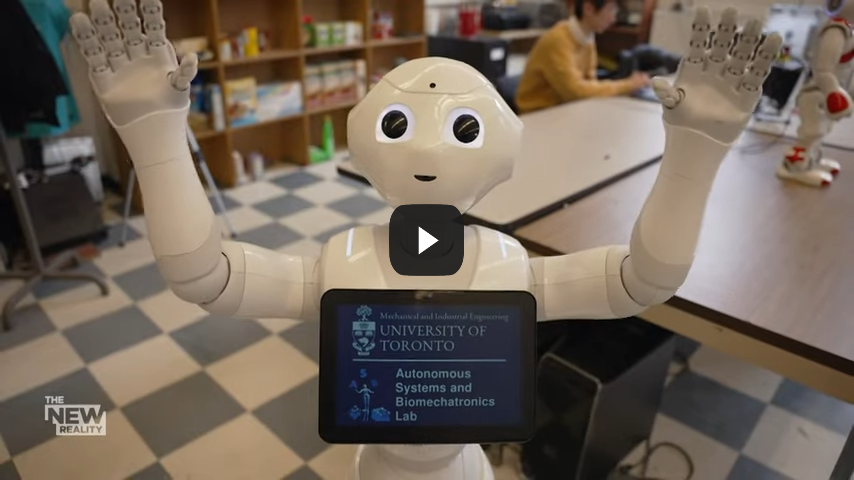Getting in Touch with Warm Tech

According to the World Health Organization (WHO), there are nearly ten million new cases of dementia worldwide. Over 60% of those with dementia live in low- and middle-income countries.
Dementia not only transforms the life of the patient who has it, but it also impacts the lives of their loved ones. When a parent or older relative has dementia, it can change their behavior, habits, and many of their quirks. They can often become forgetful, confused, and cranky. Because of these changes, dementia can become daunting and difficult to deal with.
Assistive technology exists to alleviate dementia patients from some of their difficulties. Depending on the type of dementia and the severity of the condition, technology has found ways to alleviate some of the impacts, such as speech aids, instruments to help retrieve a person’s memories, and diagnosing dementia for early treatment.
(Also Read: How AI Helps Alleviate Alzheimer’s)
Beyond this emerges a fresh new approach to dementia care that has researchers collaborating with dementia patients for what they need more of: joy.
It’s called warm technology, and it’s a breakthrough approach that is being explored by researchers from Europe and the United Kingdom.
One notable institute specializing in warm technology studies is Expertise Centre Dementia and Technology (ECDT), a collaboration between Eindhoven University of Technology and Alzheimer Nederland, a charitable organization.
ECDT’s official website says they aim to contribute to a changing approach to dementia in society. ECDT emphasizes collaboration within the dementia community, which includes not only scientists, doctors, and researchers, but also patient caregivers and dementia patients.
The key to developing effective technology that helps dementia patients is to ask the patients themselves. ECDT has worked directly with care facilities and patients in developing therapeutic robots and new interesting devices that aim to touch the patients’ lives in a more meaningful way.
For them, this means listening to what the patients have to say about the technology being developed. Looking around on their website we see an array of different projects relating to environment, hobbies, activities, and interaction.
Touch appears to be an essential component of warm technology. Several ECDT projects feature touch prominently. Physical contact with a dementia patient can do a lot for them, and patients can even benefit more from a warm and caring touch from those they trust and love. Sometimes, a touch can communicate volumes more than words ever could.
A great example of this is SAM, which looks like a pair of stylish warmly lit orb lamps. Meant to sit on a living room coffee table, these are interactive orbs that when tapped, held, stroked, or shaken, react by lighting up, vibrating, and playing audio cues familiar to the patient. SAM works best as a pair. When one orb is paid attention to, the other orb responds in a “jealous” way—glowing red and emitting a sound.
SAM can be programmed with audio cues familiar to the patient to stimulate memories, make them feel safe, and prompt them to become more present. A piece of music, a loved one’s voice, ambient sounds from nature—virtually any piece of sound that the patient resonates with positively can be programmed into the device.
Another tactile device is the Mano, and similarly, the Vita Pillow. Patients can touch and hold these cozy “devices” like a favorite blanket.
The importance of touch is underscored by the Mano’s description on its ECDT page: “Tactile experiences play a critical role in the well-being and quality of life for senior adults…Affective touch stimulation can improve mood, reduce agitation and anxiety, and promote social interaction.”
The Vita Pillow works similarly in that it can play music or familiar audio cues when the patient touches any of its six fabric touchpads.
Different patients will react and respond in different ways to these devices. Some patients like therapeutic robots like QT or Paro, while some may find them childish and silly. Researchers of warm tech find all of these responses valid and help inform projects being developed.
Some of these devices do not have any curative qualities nor are any of these strictly “assistive”. However, what warm technology does provide is a new way of keeping in touch and communicating with loved ones who have dementia. It recalibrates our approach to dementia and makes us communicate in new ways with those who have it.
Apart from finding cures and solutions for terminal illnesses, providing comfort, amusement, and even joy for patients amid these challenges is important work for technology too. 

As one of the Top 20 EMS companies in the world, IMI has over 40 years of experience in providing electronics manufacturing and technology solutions.
We are ready to support your business on a global scale.
Our proven technical expertise, worldwide reach, and vast experience in high-growth and emerging markets make us the ideal global manufacturing solutions partner.
Let's work together to build our future today.
Other Blog



